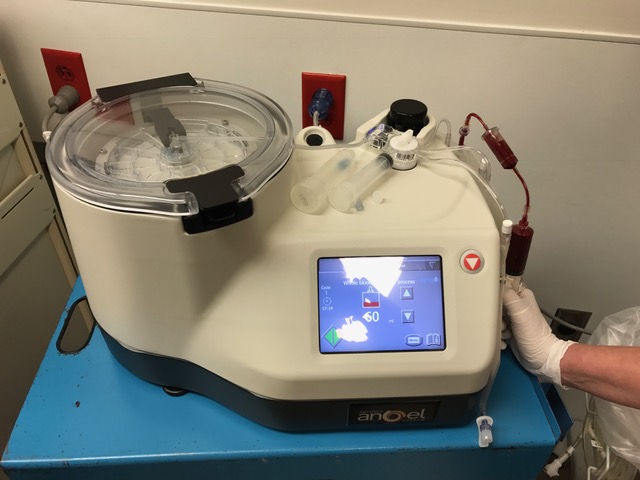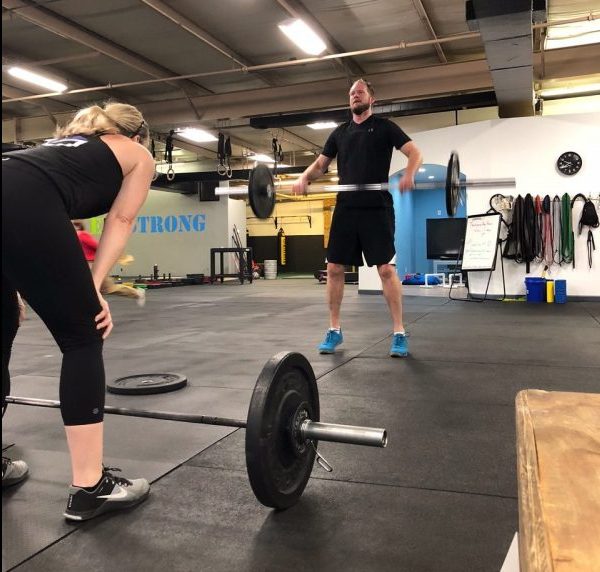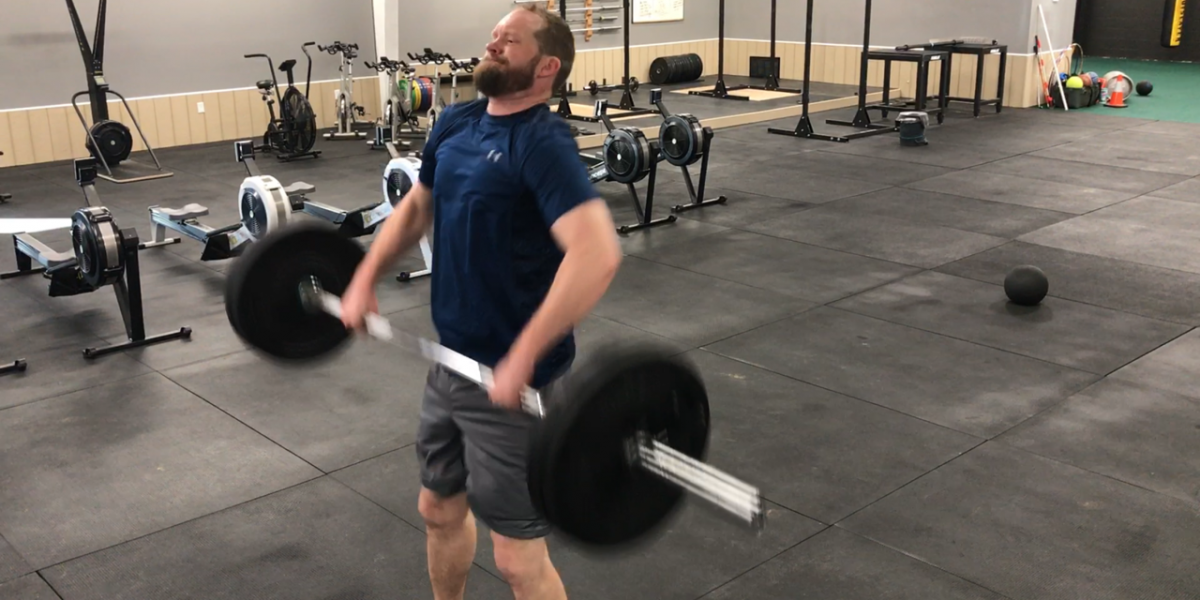PRP injection is a treatment that’s gotten a lot of hype lately. It is one of the most widely sought-after treatment by NFL players, and it’s made its way out to the Weekend Warrior population as well. As a result, I get a lot of patients asking whether it can be helpful for their problems as well. Of course their second question is often “So, what is PRP?”
A quick scan of the search results for “PRP” showed me that there is a lot of misinformation out there on the web. I’m astounded by the amount of “bro-science”, and straight-up snake oil being passed around. There are websites out there that tell you PRP can fix everything from a rocky marriage to halitosis and everything in between.
So I thought I’d give you all some of the actual science behind PRP. Cause that’s what we do here at LSO: bring the discussion back to earth so we can really help the people who need it. In specific, I want to get into the use of PRP in our prime demographic: average people that workout for health and fitness. Because you all want the PRP. You think you neeeeed the PRP. But you don’t even KNOW the PRP!
So in this article, I’m going to tell you what PRP is. I’m going to tell you what PRP can help heal. And I’m going to tell you what PRP doesn’t help with. So let’s get to it!
In This Article:
- What is PRP?
- How Long Has PRP Been Used?
- How is PRP Made?
- Does PRP Actually Work?
- Does PRP Work?
- What Problems Can PRP Treat?
- Can PRP Treat a Ruptured or Torn Tendon?
- Can PRP Help With Pain From Exercise?
- Does PRP Help After Surgery?
- What are the Downsides of PRP?

What is PRP?
First things first, let’s start with some definitions. I’ve heard your feedback: “Your blog posts are awesome, I just wish you didn’t talk like we’ve all been through medical school! I just like to lift heavy things! And my medical knowledge only includes the best way to retrieve a Goldfish Cracker from a toddler’s nostril!”
So I’m gonna start with the basics you need:
PRP stands for Platelet-Rich Plasma. It is made from the patient’s own blood, which is spun in a machine at high speed to separate the plasma and platelets out. Then weinject the plasma and platelets back into the problem area to help with healing.
Platelets are the tiny cells that float through your bloodstream and help with clotting. Platelets are like the tiny little EMT’s of your body; the first responders. When you cut your finger, the platelets in your bloodstream quickly stick to the damaged surface of the blood vessel and then start to stick to each other. They rapidly form a dam to block the blood flow to an injured area and stop the bleeding ASAP.
But the platelets don’t just stop the bleeding. They actually promote healing as well! Just like police directing traffic at the scene of the accident. When they respond to an injury, they start to secrete all sorts of growth factors. These include hormones that regulate inflammation, regulate the production of scar tissue, and stimulate cell growth.
So essentially, platelets help jump-start the healing process. And when you concentrate them into a small injection, you can deliver a powerful dose of natural healing to an injured body part.
How Long Has PRP Been Used?
Concentrated platelets in plasma as a treatment has actually been around since the 1970’s. Originally it was just used as a blood transfusion to help people who didn’t have enough of their own platelets.
PRP was first used for healing purposes in the field of facial surgery as early as the 1980’s. In that setting, it was used to decrease bleeding during surgery. But it was soon noted to improve the rates of healing as too.
Orthopedic surgeons have been investigating PRP for muscle, tendon, and ligament injuries for the last ten to fifteen years. It has taken quite a while to figure out what injuries this blood-based treatment can help with, which it doesn’t, and what preparations are best for different problems.
How Is PRP Made?
PRP is made from your own blood. A vial of blood is drawn from a vein, just like when you get your cholesterol checked. This is put into a centrifuge, which spins the blood around at a very high speed. That spinning separates the components of blood into different layers based on their density.
One of these layers contains plasma – the liquid portion of blood – with about 3 to 5 times the normal concentration of platelets. That portion of the blood is then drawn out of the tube and injected back into the body. The most common sites for injection are painful joints, tendons, and ligaments.
There are two different types of this plasma actually. One variety has a lot of white blood cells and is called Leukocyte-Rich PRP (LR-PRP). That seems to have better effects on healing tendonitis, especially tennis elbow. PRP can also be made with few white blood cells, called Leukocyte-Poor PRP (LP-PRP). That seems to be better for joint pain due to problems like arthritis.

Does PRP Actually Work?
The short answer is “Yes, PRP does help with healing!” But for a long time have much data to support all of these claims. In fact, it’s only within the past year that I’ve been satisfied with the available data showing its success. There were a lot of problems with the early science that made it hard to tell if the PRP was actually helped produced the results we were looking for.
Fortunately, in the last few years, the studies have gotten far more detailed. We have also built up enough data in the various studies to tell which problems PRP can help with and which problems it doesn’t. We can also tell whether it is better to have a lot of white cells in the PRP or to keep it free of white cells. Both varieties have their uses.
How Does PRP Work?
When PRP is injected into damaged joints, tendons, or ligaments the platelets react to the damaged tissue. They stick to the damaged collagen fibers and begin to produce all those healing growth factors. Those growth factors stimulate cell reproduction, the creation of new tendon proteins, increased blood flow, and regulate inflammation.
What Problems Can PRP Treat?
In the field of orthopedics, PRP is most often used to treat chronic injuries of tendons, joints, and ligaments. PRP is most commonly used to treat:
- Tennis Elbow (also called Lateral Epicondylitis)
- Hamstring Tendinitis
- Rotator Cuff Tendinitis (and bursitis)
- Pain from Arthritis
- Plantar Fasciitis
We don’t typically use PRP to treat minor sprains or strains. Your own body is usually capable of healing those without such invasive treatments.
Instead, we usually consider PRP when your own healing response has not been adequate. If you are still having pain 6 months or more after an injury, we are pretty sure that your body has done all it can. In that case, PRP may restart the healing process give your relief from the pain.
Professional athletes hope the boosted healing can get them back to play sooner. They will often use PRP on acute injuries to help them return to the field as quickly as possible. In the extreme, they see it as a way to overtrain and still be able to recover between sessions. Then they can push their body beyond the limits of normal human performance.
There are also other uses of PRP in other medical fields including and wound healing and hair loss. (But if you want to fill in your bald spot, you’re gonna have to see someone other than me!)
Can PRP Treat a Ruptured or Torn Tendon?
PRP can only help with partially injured tendons or ligaments. But it is not able to heal completely torn tendons and ligaments by itself. If a tendon or ligament is completely torn, it will pull back away from where it should be attached. Injecting PRP in that situation will only help it glue down to the tissue around it, but not grow back all the way down to where it belongs.
This question came up a lot when Steph Curry, the star shooter from the Golden State Warriors, had PRP injections for a knee injury. But his injury was a very mild sprain of the MCL in his knee. His ligament was only stretched, not fully torn. And since millions of dollars depend on him being at peak performance, PRP was used to treat his injury early to get him back on the court ASAP.
Of course, most people with this injury don’t need PRP. If the average person had his same injury, you could still do your job and take care of your family just fine. You might need a brace and some ibuprofen or Tylenol for the discomfort. But you could manage well enough for a few weeks until your body healed itself. However, if the pain just kept going for months and months, then PRP may be an option!
But rotator cuff tears are another injury where people want to try PRP or stem cell injections. I do feel like it’s a good option for people with partial tears or those with chronic microscopic cuff tendon damage. But if your cuff is fully torn, those little platelets don’t have enough mojo to stitch that thing back together. You’ll still need a scope.

Can PRP Help With Pain from Exercise?
One of the most promising uses of PRP is for the pain of chronic tendinitis in the athletic population. Doing a ton of box jumps, thrusters, and pull-ups can be great for your overall health and make you look fantastic in a swimsuit. But repetitive stresses can really irritate your tendons. Elbow and rotator cuff tendinitis are two of the most common problems I see when people are involved in high-intensity interval training from local gyms.
The last thing I want to do is shut those athletes down! My career and this website are focused on keeping people active so they can stay healthy. Since the new data has come out on PRP, I’m very excited to offer it to people trying to lift and WOD despite their nagging pain. I’m really hopeful that it can help people keep active and stay in the gym.
I can think of functional fitness athletes that may benefit from PRP:
The person who hurt their shoulder last year and have gotten back to everything EXCEPT for overhead pressing, because it still doesn’t feel great.
The guy whose elbow hurts too much to hang from the bar anymore, so they have to scale that part of every workout.
The person who has been doing rehab for more than 6 months, tried a steroid injection and still has pain on the shoulder every time they do a pushup.
Of course, these people still need a thorough evaluation to be certain of what’s causing the problem. But if everything is as expected, PRP may be able to help them.
Does PRP Help After Surgery?
People also wonder whether platelet-rich plasma can help heal a tendon that is surgically repaired. It makes sense, right? Go in, sew the tendon down, stick some PRP in there and get it all healing, right? Wrong!
Unfortunately, injecting PRP after a tendon repair can actually reduce the chance of the tendon healing. Why doesn’t it work in this setting? We just don’t know. But the evidence is pretty conclusive in rotator cuff repairs: DON’T DO IT!
On the other hand, there is good evidence for injecting stem cells during a rotator cuff repair, and maybe they can work for other tendons as well.
What are the Downsides of PRP?
The great thing about PRP is that there are very few risks from the procedure. The overall chance of complications is very small. There is less than a 1% chance of infection at the site of injection. And the treatment comes from your own body, so there is NO chance of an allergic reaction to it. About the only other problem people experience is pain at the site of the injection.
From a financial standpoint, the major downside is that only a handful of insurance companies are paying for these injections yet. And when they do, it’s just for lateral epicondylitis. So most of the time, it has to be paid for out-of-pocket.
The only other downside is that its not a miracle cure. It kick-starts the healing process. But it still requires that you hold off from aggravating activities and rehab the damaged area properly. Otherwise, the problem will just come back!
If you would like to schedule an appointment for your injuries and see if PRP may help, please contact my office at 540-667-9252. Or you can request an appointment through the website of my office: Bone and Joint Specialists. Please note that this post is intended for general information only and specific individual questions can’t be answered here.
Works Cited
Alves, Rubina, and Ramon Grimalt. “A Review of Platelet-Rich Plasma: History, Biology, Mechanism of Action, and Classification.” 6 July 2017,
Andia, I, and M Abate. “Platelet-Rich Plasma: Underlying Biology and Clinical Correlates.” Regenerative Medicine, Sept. 2013
Singh, P, et al. “A Systematic Review and Meta-Analysis of Platelet-Rich Plasma versus Corticosteroid Injections for Plantar Fasciopathy.” International Orthopaedics, June 2017


2 Comments
Comments are closed.